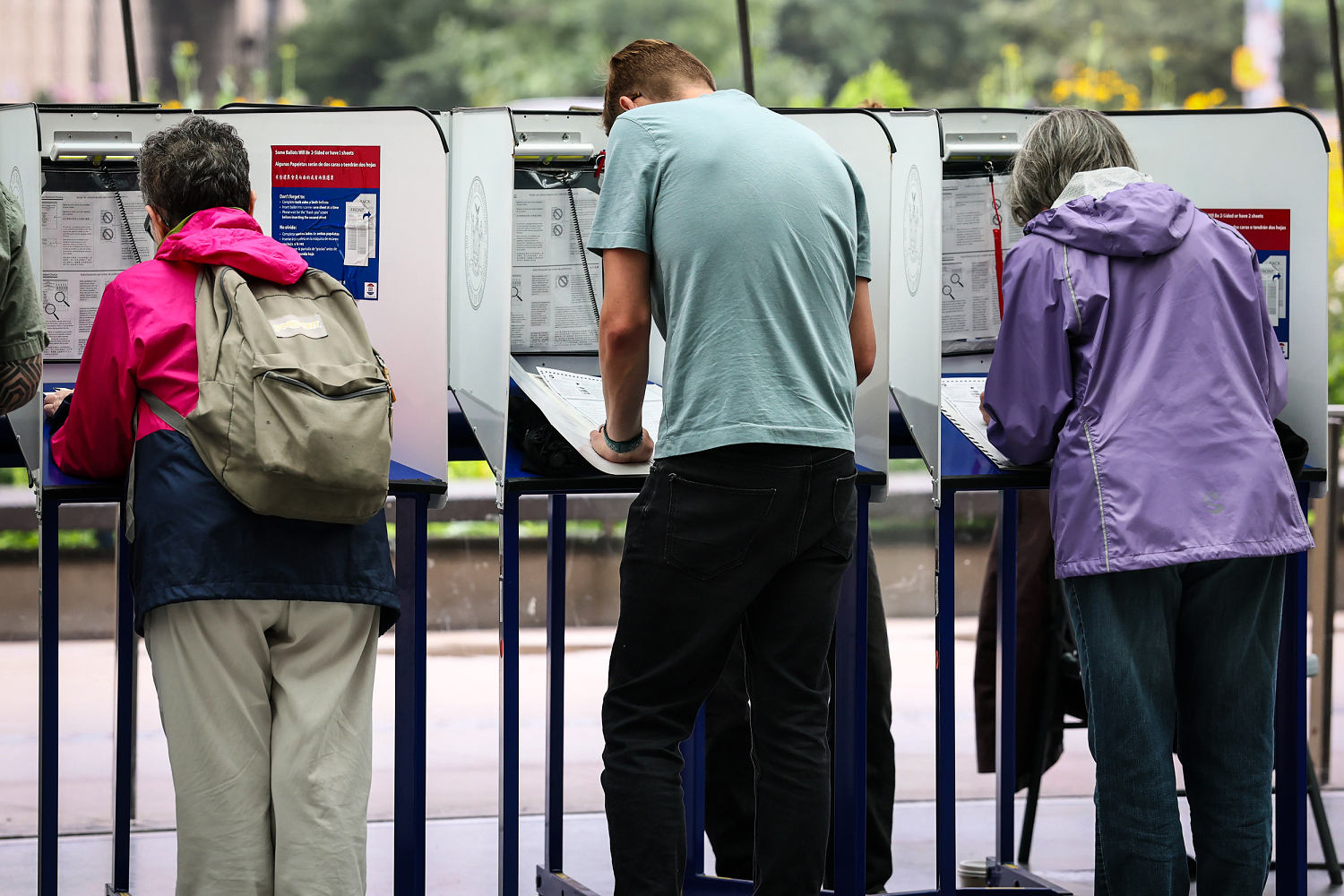
When New Yorkers fill out ballots in Tuesday’s mayoral primary, they’ll be able to choose more than just one candidate. They can pick a second choice. And a third. And a fourth. And a fifth.
It’s part of a process called ranked choice voting, a system that lets voters rank candidates in order of preference rather than pick just one.
Supporters of the system say ranked choice voting builds consensus, promotes positive campaigning and lets voters express a fuller range of opinions. Opponents argue it’s overly complicated and can lead to ballots’ being thrown out.
Here’s what you need to know about ranked choice voting.
How does ranked choice voting work?
Ranked choice voting is a method of voting in which people rank candidates in order of preference. The number of candidates voters can rank depends on the specific rules in an area. In New York City, voters can rank up to five in one race.
Voters don’t have to fill their ballots, though. A voter whose heart is set on only one candidate can just pick one. But if that candidate doesn’t get the most votes, that voter won’t have a say in later rounds of counting.
After the votes are tabulated, the last-place candidate is eliminated. Ballots from voters who supported that candidate then have the next choice counted. If no candidate has hit 50%, then counting continues, eliminating another last-place candidate and counting the next-ranked choices on all those ballots in the next round.
The process continues until a candidate reaches majority support and wins.
How long does it take to count the votes?
It depends on where the election is. In Maine, for example, the ranked choice tabulation in one of the state’s congressional districts was conducted on Nov. 15 last year, 10 days after Election Day.
In New York City, the Board of Elections will post unofficial results from the first round of votes on election night.
Preliminary elimination rounds will be tabulated a week later, and officials will post an unofficial report, according to the elections board. The results could still change as mail and affidavit ballots are processed.
It can take longer to project winners in ranked choice votes, because election authorities need to have every ballot counted before they know in what order to eliminate last-place finishers. And as we know from recent elections, it can take some time to process and count mail-in ballots, provisional votes and others.
Why use ranked choice voting?
Supporters argue that ranked choice voting strengthens democracy by promoting positive campaigning and coalition-building, since people choose more than one candidate.
Advocates also say the system encourages politicians to find middle ground, which could help reduce the number of lawmakers on the ideological fringe.
“With RCV, candidates run more positive campaigns — or even ‘cross-endorse’ one another. Instead of worrying about ‘wasting’ their vote or picking the lesser of two evils, voters can rank their honest preferences. RCV rewards candidates who can build a majority coalition,” Deb Otis, the director of research and policy for the election reform group FairVote, said in a statement.
In New York, mayoral contender Zohran Mamdani, for example, has announced cross-endorsements with fellow contenders Michael Blake and Brad Lander in an effort to consolidate support.
The system is also called instant runoff voting, since it replaces the need for separately scheduled runoffs for winners to get majority support, because votes are counted until a candidate has majority support. New York City spent about $13 million in 2013 for a runoff that drew a turnout rate of 6%, which drew calls to switch to ranked choice voting.
Supporters also point out that ranked choice voting eliminates candidates’ winning with extremely low percentages in crowded primaries. For example, Rep. Diana Harshbarger, R-Tenn., won her primary in 2020 with 19% of the vote before she easily won the general election. Rep. Shri Thanedar, D-Mich., won an open primary in 2022 with 28% before he likewise enjoyed an easy general election in a safe district.
“New Yorkers adopted ranked choice voting because they wanted a change from primaries where candidates could win with just 20% of the vote. Now, thanks to RCV, voters have more choice and more voice in who represents them,” Susan Lerner, the executive director of Common Cause New York, said in a statement.
What are the problems with ranked choice voting?
Opponents argue that the system confuses voters and leads to ballots’ being thrown out.
Critics also say ranked choice voting lengthens the voting process because voters have to take the time to research all of the candidates. In New York City’s case, that includes 11 mayoral candidates on the Democratic side.
New York’s 2021 mayor’s race was also marred by initial controversy after 135,000 test ballots were accidentally included in one version of the announced election returns as the city used ranked choice voting for the first time.
“Ranked choice voting is like putting your ballot in a paper shredder and hoping democracy miraculously reassembles itself inside the black box of tabulation,” said Madeline Malisa, a senior fellow at the conservative Foundation for Government Accountability.
“The reality is ranked choice voting has been a disaster of delayed results, errors, confusion and voter disenfranchisement everywhere it’s been tried. All of those problems erode confidence,” Malisa added.
Some groups have also argued that ranked choice voting disenfranchises minority voters, with several analyses noting that wealthier and whiter neighborhoods had fewer mismarked ballots and more use of ranking.
Though ranked choice voting has spread to a number of jurisdictions in recent years, there have also been efforts to roll it back. In Alaska, voters narrowly passed (by about 1 percentage point) a ballot measure enacting a ranked choice voting system in 2020. Four years later, an effort to repeal the system failed by an even narrower margin, 0.2 points.
